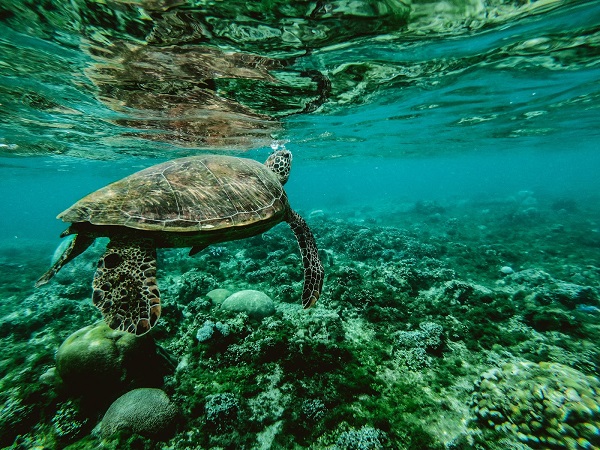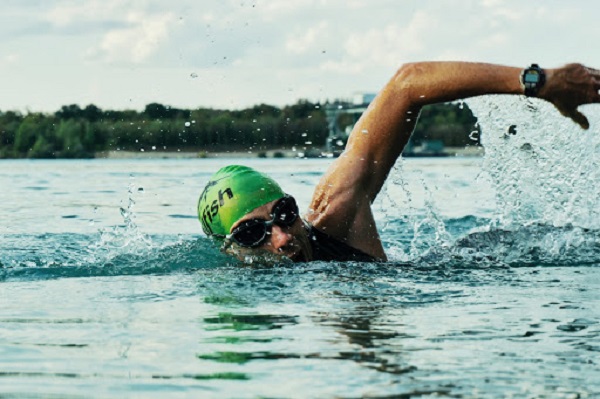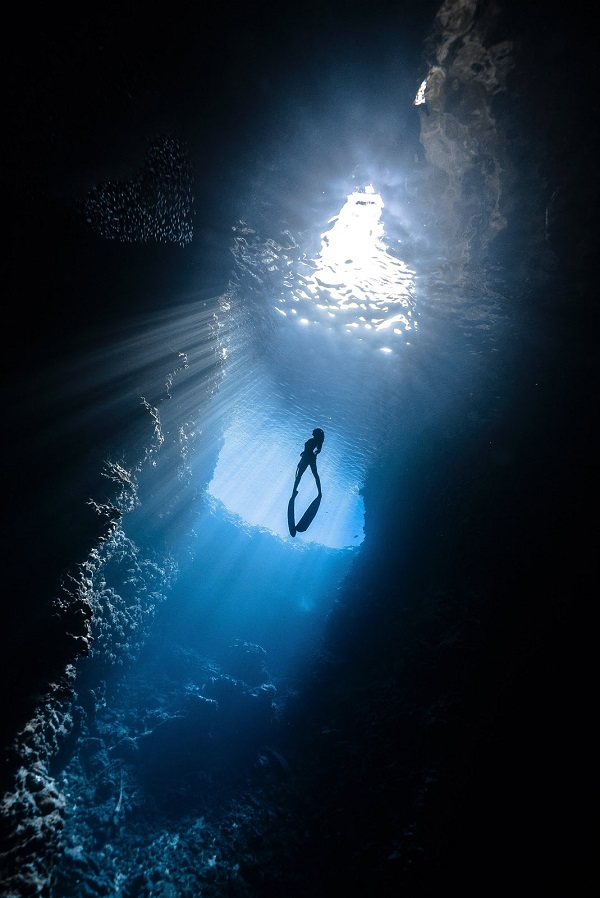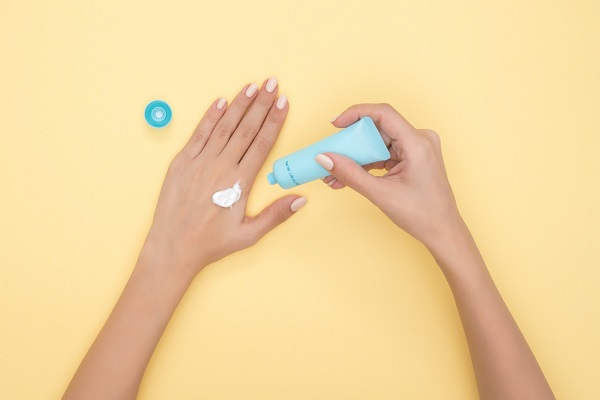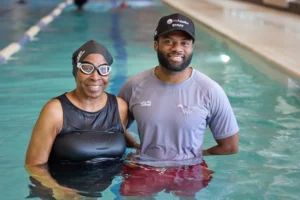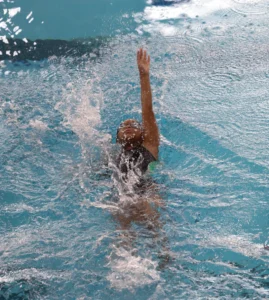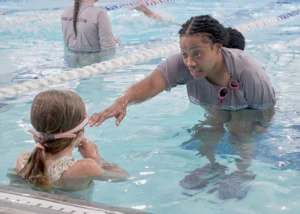5 Tips for Staying Safe When Swimming in Oceans, Rivers, and Lakes
“Open-water swimming” is exactly what it sounds like. It’s any swimming that takes place in an outdoor body of water. That can be everything from lakes to rivers to oceans. Open-water swimming can be fun—snorkeling in Aruba, anyone?—but here are five important things to keep in mind before you jump into uncharted waters.
1. Know the Water
(This turtle has been swimming around those rocks for hours. We hope he’s not lost!)
Every body of water is different. As much as possible, understand the water you’re going to be in. Is the water going to be muddy or cloudy, or will visibility be good? Are you going to be in saltwater or freshwater? (This will affect your buoyancy.) Do you need to worry about tides or currents?
Doing your homework and being prepared about what conditions you might encounter can help lessen your chance of unpleasant surprises and risks once you’re in the water.
2. Bring the Right Gear
(“Must swim faster. My watch is saying I’m late for my flight.”)
Whether you’re swimming off the deck of a boat or you’re just hugging the coast, make sure you know what gear to bring.
Think through whether you need any of the following:
- Wet suit. If the water is cold, a wet suit can keep your core temperature at a safe and comfortable level. Getting caught in water that’s too-cold can make your muscles tense up, and that’s the last thing you want when swimming.
- Open-water goggles. Your pool goggles might do just fine, but if you’re serious about open-water swimming, invest in a pair of open-water goggles. The lenses are often tinted to accommodate for brighter outdoor conditions, and the lenses are also wider for better awareness of your surroundings.
- Brightly colored swim cap. Go with neoprene if you’re going to be in cold water. This will keep your head warm, which is vital for prolonged water safety. For warmer water, latex could do. Whatever the material, though, keep the color scheme bright and noticeable. You want to be visible to boats, kayakers, other swimmers, or anything else you might encounter in the open water.
- Buoy or life jacket. Depending on your skill level, never venture into the open water without a tow buoy or a full life jacket. The buoy gives you a way to take a periodic break, while the life jacket provides more comprehensive safety for less advanced swimmers. If you’re unsure what type of flotation device you need, always err on the side of more protection.
3. Know the Risks
(“Oops, I dropped my keys!”)
Open-water swimming is a lot different than doing laps in your local pool, and with all the unknown variables you encounter, it’s the true test of water competency. It’s important, therefore, to know all the risks before you dive in.
- Microorganisms. Unlike pool water, open water can potentially contain varying levels of pollution or contamination. Never swallow water while swimming outdoors.
- Cold water shock. Depending on your location and conditions, the water you’re swimming in might be deceptively cold. This can cause you to gasp involuntarily as you enter the water. Be careful not to intake water when this happens. Very cold water can also contribute to muscle cramps or difficulty moving your extremities. This is, obviously, potentially dangerous while swimming.
- Overconfidence. Many swimmers who feel they’ve mastered the sport in the pool feel prepared and ready to try open-water swimming. An often-unconsidered risk, however, is overconfidence. Just because you don’t use a flotation device in the pool doesn’t mean it’s not a good idea in the open water. Before open-water swimming, accurately assess your abilities, and then still err on the side of caution.
- Strong currents or tides. Again, depending on where you’re swimming, you might experience currents or tidal shifts. Even if the water doesn’t look rough, these movements of water under the surface can be unexpectedly strong. Getting caught in them can be mentally and physically exhausting and often causes dangerous panic. Know if you’re likely to encounter this where you’re swimming.
4. Be Environmentally Aware
When you’re swimming in open waters, you’re directly in nature. That can be peaceful, relaxing, and restorative. Especially with Earth Day coming up on April 22, it’s also important to be aware of your impact on your surroundings.
When you’re in or around a body of water, never litter. The impact of plastic in our oceans is catastrophic. While it’s going to take a global overhaul to our packaging practices to make an immediate and lasting impact, taking this kind of personal responsibility can help contribute to the solution.
Also be aware that whatever is on your body goes directly into the water source. Think perfumes, lotions, hair products, and sunscreens. Before swimming in open water, take a shower to rinse off as many chemicals as possible. For sun safety and ocean health, consider any number of nature-safe sunscreens.
5. Be Animal Aware
(“Would you believe I’m just a large minnow? Nah, you got me. I’m just your local comedian shark.”)
When you’re swimming in open waters, there’s a good chance you’ll encounter wildlife. Even if you know the fish, marine birds, or other animals you encounter while swimming are safe, always give them plenty of space. Never try to touch, feed, or otherwise interfere with any animal you encounter in nature.
Especially along the Atlantic coast, swimmers might be concerned about sharks. Sharks are present in these waters and the risk of an attack is extremely low but please be careful!
Where Can I Swim in Virginia?
Looking for a great swimming hole to enjoy this summer? Check out this list of amazing places to take a dip in Virginia.
Want to hone your swimming skills before you tackle the open ocean? Learn more about the classes we offer, and if you like what you see, sign up today!

